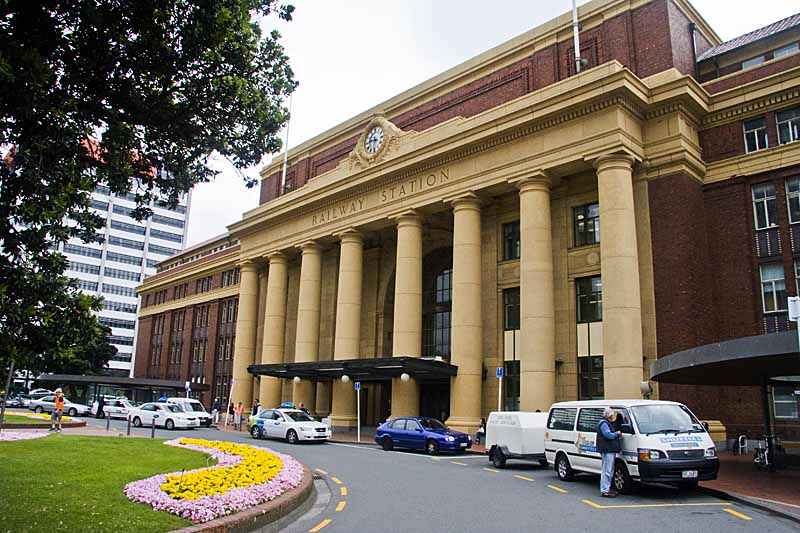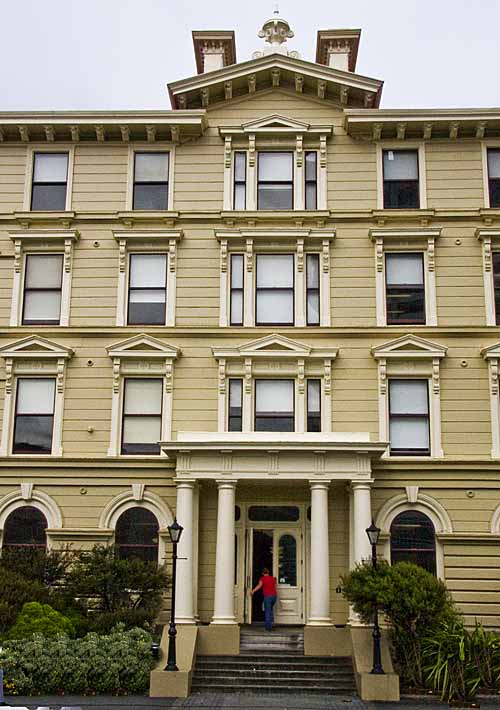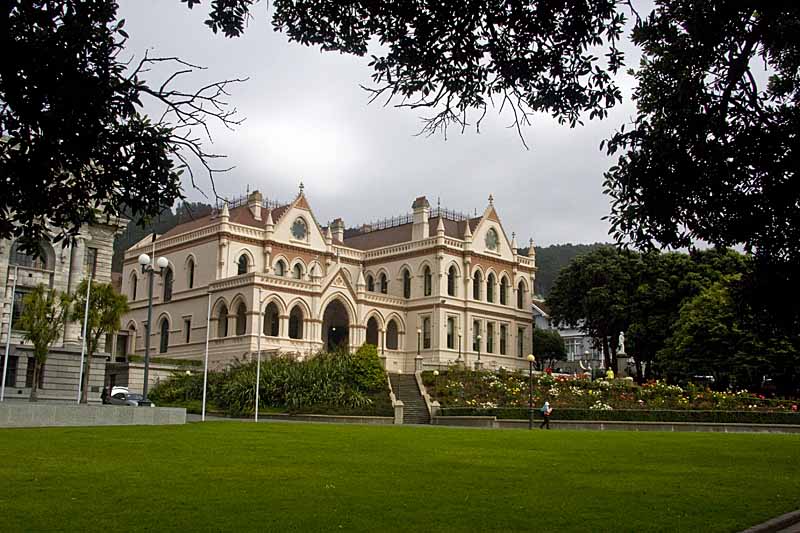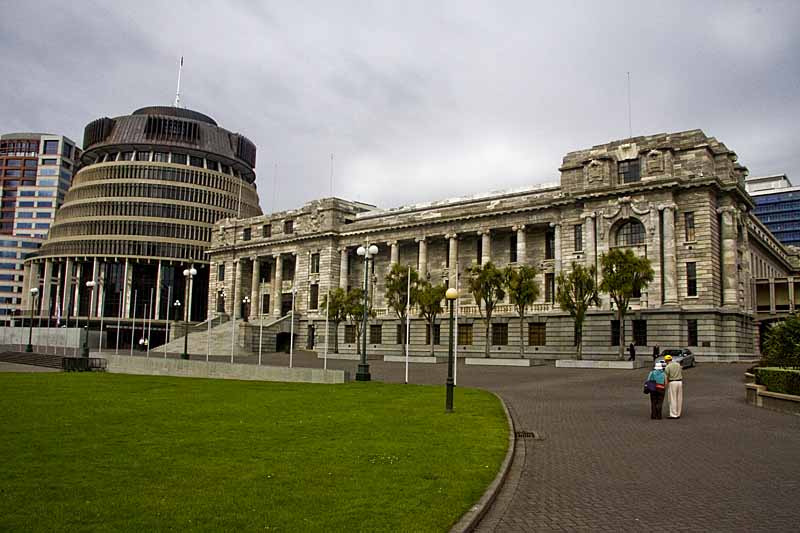A Trip to Australia and New Zealand
Wellington
Major buildings in the older part of Wellington include the Railway Station and various government buildings that range in style from stodgy classic, through Victorian stately, to modern awkward. The unfortunate Parliament building is popularly known as the Beehive, but then all New Zealanders appear to be very polite people.

A fascinating question arises when one attempts to determine when New Zealand became independent of Great Britain. National Day in New Zealand is February 6 celebrating the signing of the Treaty of Waitangi in 1840 between representatives of Great Britain and a group of Maori Chieftains. Less than a year later, New Zealand was accepted into the British Empire as a colony. There is no question in either Wellington or London as to the independence of New Zealand, but there is also no date when it occurred. In theory, the British crown still has the right to confirm or deny legislation passed by the New Zealand Parliament, but most judicial scholars and all practical politicians believe that the right is held in name only and will never be exercised.

Independence in New Zealand grew gradually rather than suddenly and relations between London and Wellington have, by and large, had smooth sailing for the entire life of the nation state. An important early development was the New Zealand Constitution Act of 1852 by which London established a legislature in New Zealand. In 1986 the New Zealand legislature passed legislation that nullified the earlier Constitution Act and created a new constitution for New Zealand. Today, the Head of State in New Zealand is still the British monarch and that office is represented in Wellington by the Governor-General, but the role is entirely symbolic. Real political authority rests solely with the New Zealand Parliament. Although the parliament started out in New Zealand as a bicameral legislature, today there is only one House of Representatives.

As is the case in Great Britain, the effective head of government is the Prime Minister and he is selected by the party or parties that hold a majority of the seats in parliament. The Prime Minister then selects a cabinet of ministers who help to administer the government. As is the case in London, the symbolism of the Prime Minister exercising power in the name of the sovereign is somewhat quaint to say the least. In New Zealand it is made even more exotic by the practice of calling the sovereign the king or queen of New Zealand rather than of Great Britain. The organization of local government is based upon sixteen regions and seventy three territorial authorities. Each territorial authority has several community boards which is the lowest level of local government in the country. A separate judiciary exists and the highest court is the Supreme Court of New Zealand.

Political parties have existed in New Zealand since 1891 and for most of it's history a two party system was in effect. Today there are a number of registered political parties and the two largest parties are usually unable to govern without relying on the support of one or another of the smaller parties. The result is usually a coalition government. Even so the National Party (center right) and the Labour Party (center left) have dominated the politics of the country in modern times.
